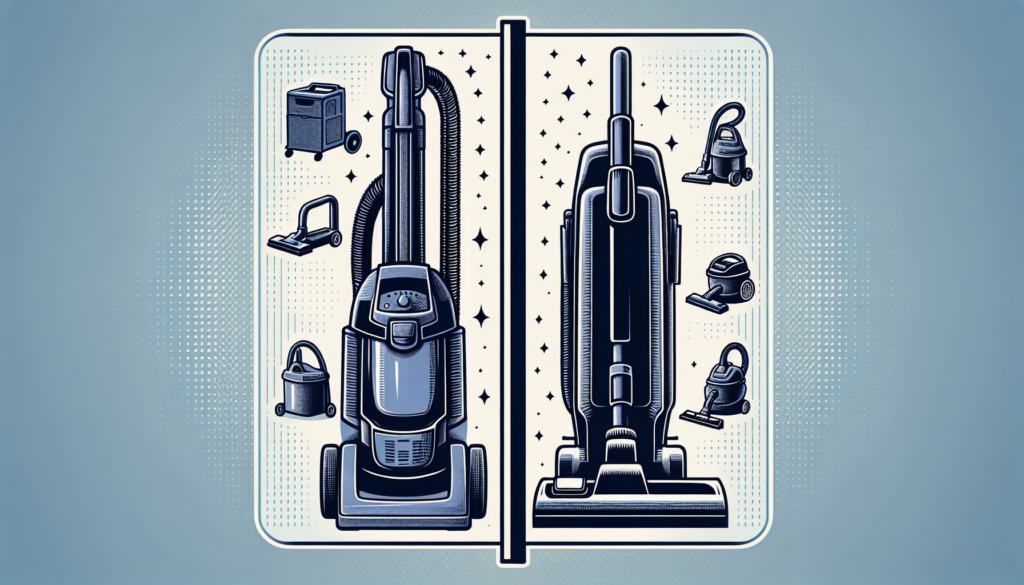In the world of luxury watches, understanding the different types of watch movements is essential for any enthusiast or potential buyer. Whether you’re new to the industry or a seasoned collector, this guide on BuySellCloud.com provides expert insights and tips to help you make informed purchasing decisions. From mechanical movements to quartz and automatic movements, our comprehensive guide will give you the knowledge and confidence to find the perfect watch that suits your style and preferences.

Understanding Watch Movements
If you’ve ever dabbled in the world of timepieces, you may have come across the term “watch movements.” While it may sound like a technical term reserved for watch aficionados, understanding watch movements is crucial for any watch enthusiast or buyer. In this article, we will delve into the intricacies of watch movements, including their importance, different types, and how they impact watch prices and features. So, whether you’re considering buying a watch or simply curious about the inner workings of these mechanical marvels, read on to gain a comprehensive understanding of watch movements.
What are watch movements?
In simple terms, watch movements refer to the mechanism inside a watch that drives its timekeeping functions. Think of it as the “engine” of a watch, responsible for the precise measurement of time. Watch movements consist of various components, such as gears, springs, and escapements, all working together to ensure accurate timekeeping. Understanding the different types of watch movements is essential when choosing a watch that suits your preferences and lifestyle.
Why are watch movements important?
Watch movements play a crucial role in the overall functionality and performance of a timepiece. The type of movement a watch utilizes affects its accuracy, maintenance requirements, and even its price. Whether you prefer a mechanical or quartz movement, understanding their characteristics and differences will help you make an informed decision. By knowing the ins and outs of watch movements, you can find a timepiece that aligns with your needs and preferences.
Different types of watch movements
When it comes to watch movements, two main types dominate the market – mechanical movements and quartz movements. Each type has its unique characteristics and offers distinct advantages and disadvantages. Let’s explore these two types of movements to gain a deeper understanding of their inner workings and features.
Mechanical Movements
How do mechanical movements work?
Mechanical movements are the traditional heart and soul of mechanical watches, often admired for their intricate craftsmanship and rich history. In a mechanical movement, energy is generated through the winding of a mainspring, which stores potential energy in the watch. As the mainspring unwinds, this energy is gradually released, powering the movement of the watch’s hands.
The energy from the mainspring is transmitted through a series of gears and levers, regulating the movement of the watch’s hands and powering any additional complications and functions. The complexity of mechanical movements is a testament to the artistry and skill required in their creation.
Pros and cons of mechanical movements
Mechanical movements offer a host of advantages, making them a popular choice among watch enthusiasts. Firstly, they are widely regarded for their craftsmanship and the attention to detail that goes into their creation. Mechanical movements also provide a distinct sense of charm and tradition, as they have been powering timepieces for centuries.
However, mechanical movements also have some drawbacks to consider. Due to their intricate design and craftsmanship, mechanical watches tend to require regular servicing and maintenance to ensure their longevity and accuracy. Additionally, mechanical movements are generally more expensive than their quartz counterparts, making them a more significant investment.
Types of mechanical movements
Within the realm of mechanical movements, two main types exist – manual movements and automatic movements. Let’s take a closer look at each type to understand their unique characteristics.
Manual movements
Manual movements, also known as hand-wound movements, require manual winding to generate the energy needed to power the watch. By turning the crown of the watch, you wind the mainspring and store potential energy, enabling the watch’s timekeeping functions. Manual movements offer a hands-on experience and give wearers a direct connection to the inner workings of their timepiece.
Automatic movements
Automatic movements, also referred to as self-winding movements, harness the natural motion of the wearer to generate energy. Inside an automatic watch, a rotor, which freely spins as you move your wrist, winds the mainspring. This continuous winding ensures that the watch remains fully powered without the need for manual winding. Automatic movements offer a convenient and hassle-free experience, making them increasingly popular among watch enthusiasts.

Quartz Movements
How do quartz movements work?
Unlike mechanical movements, which rely on intricate gears and springs, quartz movements use the natural electrical properties of quartz crystals to keep time accurately. In a quartz movement, an electrical current is sent through the crystal, causing it to vibrate at a specific frequency. These vibrations are then measured and converted into pulses, precisely dividing time into regular intervals.
The energy efficiency and accuracy of quartz movements are unparalleled, often boasting accuracy levels within seconds per month. Quartz watches are also known for their reliable timekeeping, as they are unaffected by factors such as gravity and temperature variations.
Advantages of quartz movements
Quartz movements have several advantages, making them a popular choice for everyday wear and practical timekeeping. Firstly, they offer superior accuracy, ensuring that your watch keeps time reliably. Additionally, quartz movements require significantly less maintenance compared to mechanical movements. Due to their simplistic design, quartz watches are often more affordable and readily available.
Disadvantages of quartz movements
While quartz movements excel in many areas, they also have a few downsides to consider. Some watch enthusiasts may find quartz movements lacking in the artistry and craftsmanship displayed by mechanical movements. Additionally, quartz movements rely on batteries for power, meaning you will need to replace the battery periodically. This requirement for battery changes can be seen as a minor inconvenience to some.
Accuracy of quartz movements
One key advantage of quartz movements is their remarkable accuracy. Quartz watches typically boast accuracy levels within seconds per month, exceeding the precision of most mechanical movements. This high level of accuracy makes quartz watches an ideal choice for those who rely on their timepieces for precise timekeeping, such as athletes or professionals who work in demanding environments.
Choosing the Right Movement
Consider your lifestyle and needs
When it comes to choosing the right watch movement, it’s essential to consider your lifestyle and specific needs. Are you looking for a timeless, traditional timepiece to pass down through generations? Or perhaps you require a reliable and accurate watch for daily wear and practical uses. By understanding the demands of your lifestyle, you can narrow down your options and find a watch movement that aligns perfectly with your requirements.
Traditional vs. modern movements
If you appreciate the artistry, craftsmanship, and heritage associated with watchmaking, traditional mechanical movements may be the perfect choice for you. These movements offer a unique charm and a connection to the long history of watchmaking. On the other hand, if you value precision, convenience, and low maintenance, modern quartz movements can enhance your everyday life through accurate timekeeping and hassle-free operation.
Mechanical vs. quartz movements
Choosing between mechanical and quartz movements ultimately comes down to personal preference and the qualities you seek in a timepiece. Mechanical movements provide a sense of tradition, craftsmanship, and a connection with horological heritage. However, they require more upkeep and tend to be more expensive. Quartz movements, on the other hand, offer superior accuracy and low maintenance, making them an excellent choice for practical and reliable timekeeping.
Factors to consider
Several factors should be considered when choosing a watch movement. Beyond personal preferences, factors such as budget, desired features and complications, and the overall aesthetic appeal of the watch should be taken into account. By carefully evaluating these aspects, you can make an informed decision and choose the perfect watch movement that meets all your requirements.

Watch Movements and Watch Prices
Influence of movements on watch prices
There is a significant correlation between watch movements and watch prices. Generally, watches with mechanical movements tend to be more expensive compared to their quartz counterparts. This price difference is primarily due to the intricate craftsmanship, traditional artistry, and time-consuming nature of mechanical movements. The complex gears, springs, and other components required in mechanical movements contribute to higher production costs, driving up the price of these timepieces.
Why mechanical watches tend to be more expensive
Several factors contribute to the higher cost of mechanical watches. Firstly, the labor-intensive nature of crafting a mechanical movement requires skilled watchmakers to invest countless hours in assembling and fine-tuning each component. This meticulous craftsmanship, combined with the limited production capacity of mechanical movements, drives up the price of these watches.
Another factor that increases the cost of mechanical watches is their maintenance requirements. Regular servicing and adjustments are necessary to ensure the longevity and accuracy of mechanical movements. The added cost of servicing and the expertise required further add to the overall price of mechanical timepieces.
Value for money considerations
While mechanical watches may come with a higher initial price tag, many consider them to be an investment as they often retain or increase their value over time. The rarity and exclusivity of mechanical movements, combined with their historical significance, make them highly sought after by collectors. By purchasing a mechanical watch, you are not only acquiring a timepiece but also a piece of horological history that can hold sentimental and financial value for years to come.
On the other hand, quartz watches are often seen as more affordable options and provide excellent value for money. The combination of accurate timekeeping, low maintenance costs, and a wide range of affordable options makes them an attractive choice for those seeking a reliable timepiece without breaking the bank.
Maintenance and Care
Maintaining mechanical movements
Proper maintenance is vital to ensure the longevity and accurate timekeeping of your mechanical watch. Regular servicing, usually recommended every three to five years, involves disassembling the movement, cleaning each component, and lubricating the necessary parts. This servicing helps prevent wear and tear, extends the life of the movement, and keeps the watch running smoothly.
Additionally, it’s important to handle your mechanical watch with care, avoiding extreme temperature changes and strong magnetic fields. Winding your watch at the same time each day and storing it in a watch box or case when not in use can also contribute to its longevity.
Caring for quartz movements
Quartz movements require comparatively less maintenance compared to mechanical movements. However, regular battery changes are essential to keep your quartz watch running reliably. To prevent any moisture damage, ensure the crown is always pushed in when not adjusting the time or date. If your quartz watch features water resistance, you should also have the watch pressure-tested periodically to ensure its water-resistant properties remain intact.
Servicing and repair considerations
In the unfortunate event that your watch requires servicing or repair, it is crucial to entrust it to a certified and reputable watchmaker or authorized service center. Proper handling and expertise are essential to maintain the integrity of the movement and ensure any necessary repairs are conducted accurately. While servicing costs can vary depending on the complexity of the movement and the brand, investing in professional service will help protect your investment and extend the lifespan of your timepiece.
Watch Movement Brands
Leading brands for mechanical movements
Several renowned watch brands have established themselves as leaders in the realm of mechanical movements. Brands such as Rolex, Patek Philippe, and Audemars Piguet are revered for their exceptional craftsmanship, intricate movements, and timeless designs. These brands have a rich history and expertise in the art of watchmaking, consistently pushing the boundaries of mechanical movement innovation.
Prominent brands for quartz movements
While mechanical movements dominate the luxury watch market, many brands have made significant strides in the realm of quartz movements. Brands like Seiko, Casio, and Citizen have become synonymous with quartz watches, offering an impressive range of affordable, reliable, and accurate timepieces. These brands have perfected the art of crafting quartz movements, ensuring exceptional performance and longevity.
Reputation and reliability of movement brands
When considering a watch, it’s important to assess the reputation and reliability of the movement brand. Reputable movement brands invest in research and development, ensuring their movements adhere to rigorous standards of quality and precision. By opting for watches with movements from established and trusted brands, you can have confidence in the accuracy and performance of your timepiece.
Watch Movements and Features
Additional features associated with different movements
Beyond accurate timekeeping, watch movements offer a variety of additional features and complications, further enhancing the functionality and appeal of a timepiece. Mechanical movements often boast impressive complications, such as chronographs, moon phases, and tourbillons. These complications involve additional mechanisms and display elements that provide additional timekeeping functions or visual interest.
Quartz movements, although typically simpler in design, can also feature various additional features. Some common features seen in quartz watches include date displays, alarm functions, and even GPS connectivity for accurate timekeeping across different time zones. Each additional feature brings its unique advantages and appeals to individuals with specific needs or preferences.
Complications and functions
Complications refer to any additional mechanical function or feature beyond basic timekeeping. Mechanical movements are known for their wide range of complications, with some watches boasting multiple features and functions. Chronograph complications, which allow users to measure elapsed time, are particularly popular and can be found in many mechanical watches. Other complications include moon phase displays, perpetual calendars, and world timers, to name a few.
Quartz watches, while typically simpler in design, can also offer a variety of complications, albeit often electronically powered. Some examples include digital displays, countdown timers, and even fitness tracking capabilities. These additional functions enhance the practicality and versatility of quartz watches.
Impact on watch design and aesthetics
The type of movement utilized in a watch significantly impacts its design and overall aesthetics. Mechanical watches, with their intricate movements and visible components, often feature exhibition casebacks, showcasing the beauty and craftsmanship of the movement. These watches have an undeniable charm and appeal, captivating enthusiasts with their mechanical complexity.
On the other hand, quartz watches typically have slimmer profiles and more streamlined designs due to their simplified movements. They often prioritize practicality and versatility, resulting in sleek and timeless aesthetics suitable for both casual and formal occasions. Whether you prefer the visible intricacies of a mechanical movement or the understated elegance of a quartz movement, the choice of movement will greatly influence the overall design of your timepiece.
Popular Watch Movements
Overview of popular mechanical movements
The world of mechanical movements is vast and diverse, with each brand offering its unique take on watchmaking. Some popular mechanical movements include the ETA 2824, often found in entry-level luxury watches for its reliable performance and reasonable price point. The Rolex Caliber 3135 is highly regarded for its exceptional accuracy and durability, often found in Rolex’s iconic models.
Patek Philippe’s Calibre 324 SC is renowned for its intricate craftsmanship and meticulous attention to detail. Audemars Piguet’s Caliber 3120 showcases the brand’s commitment to innovation, featuring an automatic movement with an impressive power reserve. These iconic mechanical movements have cemented their status in the horological world, captivating collectors and enthusiasts alike.
Highly regarded quartz movements
While mechanical watches often steal the spotlight, many quartz movements deserve recognition for their accuracy and reliability. Seiko’s high-precision quartz movements, such as the 9F series, boast remarkable accuracy levels and exceptional longevity. Citizen’s Eco-Drive quartz movement utilizes light-powered technology, eliminating the need for battery changes and offering a sustainable approach to timekeeping.
Casio’s G-Shock watches are equipped with quartz movements that prioritize durability and shock resistance, making them ideal for adventurous individuals. These highly regarded quartz movements demonstrate the advancements in technology and craftsmanship that have made quartz watches an integral part of the watch market.
Conclusion
In conclusion, understanding watch movements is pivotal when considering a timepiece purchase. Watch movements drive the functionality, accuracy, and features of a watch, making them crucial components to evaluate. Whether you gravitate towards the timeless charm of mechanical movements or prefer the accuracy and convenience of quartz movements, knowing the intricacies of each type empowers you to make an informed decision.
Consider your lifestyle, preferences, and budget when selecting a watch movement that suits your needs. Additionally, factors such as maintenance requirements, watch prices, and the reputation of movement brands should be taken into account. By immersing yourself in the world of watch movements, you’ll be able to appreciate the artistry, craftsmanship, and innovation that culminate in these extraordinary timepieces.




